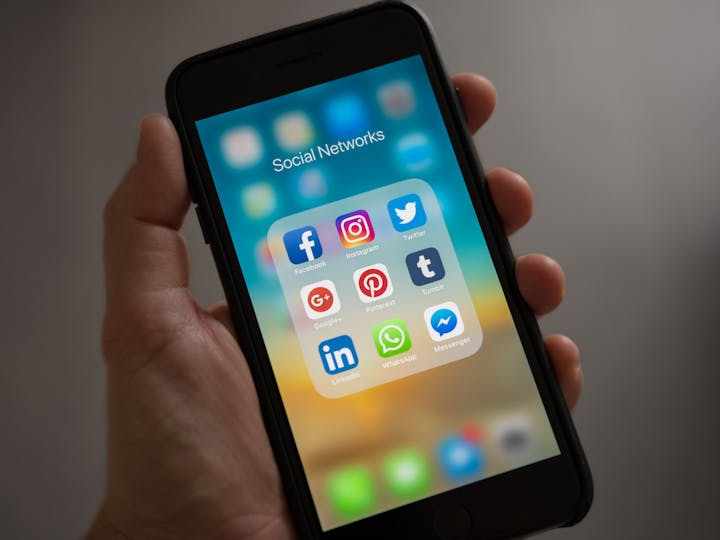News spreads with a single swipe. Whether it’s a product issue, a public statement gone wrong, or a customer complaint gaining traction, your response—or lack of one—can shape how people see your brand. That’s why social media has become the front line of crisis management. It’s not just where problems show up first. It’s also where your customers expect answers, empathy, and action.
Why Customers Now Expect Public Accountability
People no longer wait for a press release or a formal statement. They go straight to social platforms to ask questions, share opinions, or call out problems. And they expect to be heard—fast.
When you stay silent, it sends a message. It makes your brand look disconnected or even dismissive. But when you respond openly and directly, it shows you’re paying attention and willing to take responsibility.
Public replies don’t just help the person who complained. They show everyone watching that you’re listening and you care. That kind of accountability builds trust faster than any marketing campaign ever could.
Businesses Are Upgrading Their Tools to Keep Up
To meet these rising expectations, brands are rethinking the tools they rely on. Many are now expanding how they use customer relationship management (CRM) systems. These tools aren’t just about tracking purchases or storing contact details anymore. They’re being adapted to handle real-time social media activity—where most crises start and spread.
By linking customer data with live interactions, businesses can spot patterns, understand sentiment, and respond with context. That kind of data-backed engagement helps teams reply quickly and personally, even when facing a flood of attention. As a result, the benefits of social CRM are becoming clear for brands that need to manage high-stakes situations with speed and precision.
Social Listening Helps Spot Trouble Before It Grows
Most crises don’t explode out of nowhere. They often start as small complaints, quiet frustrations, or scattered comments. Social listening helps you catch those early signals before they spread.
By tracking keywords, brand mentions, and even tone, you can see what people are saying—even if they don’t tag you. That gives you time to understand the issue and plan a response before it becomes a public pressure.
It’s like having a radar for customer concerns. The sooner you detect a problem, the better chance you have to fix it calmly and confidently.
Ignore the early signs, and the problem can spiral out of control.
One Post Can Go Viral—For Better or Worse
All it takes is one frustrated customer with a phone and a following. A single post can reach thousands in minutes. If your brand isn’t ready, the damage can build fast.
But the same speed works in your favor, too. A thoughtful, human response can turn a tense moment into a win. People share posts that feel real—especially when brands own their mistakes or offer real help.
You don’t need a perfect reply. You just need to show up, sound like a person, and speak with honesty. That alone can shift the tone of the entire conversation.
Real-Time Feedback Makes Responses Smarter
Being on the front line of crisis management means acting fast, but acting smart is just as important. Real-time feedback gives you the chance to adjust your responses based on how people are reacting. You can see which parts of your message are landing well and which ones need refinement.
With immediate insights, you don’t have to guess what your audience thinks. You can pivot, adjust tone, or provide more context as needed. This ability to adapt in real time keeps your brand’s response more relevant, personal, and effective. It’s all about being present and responsive, not just reactive.
Social Channels Let You Show Leadership in Action
When a crisis hits, people don’t just want words—they want to see action. Social media is the perfect place to showcase the steps you’re taking to address the issue. Whether it’s sharing updates, offering solutions, or showing behind-the-scenes efforts, these platforms give you a chance to lead by example.
As this study shows, 59% of respondents prioritize clarity in crisis communications, emphasizing the need for clear, straightforward information without technical jargon. This confirms that transparency and clear messaging are critical during a crisis.
Showing your progress in real time helps build confidence as well. It turns a challenging situation into an opportunity to demonstrate your commitment to resolving the problem. People appreciate transparency, and seeing your efforts firsthand makes your response feel genuine and trustworthy.
Crises Don’t Stick to Business Hours—Neither Does Social Media
A crisis can emerge at any time, whether it’s 3 a.m. or during a weekend holiday. Unfortunately, these problems don’t wait for your office hours to end before they spread. Social media moves fast and never sleeps, meaning your brand needs to be prepared around the clock.
If you’re not monitoring social channels consistently, you might miss critical moments to engage or calm concerns. It’s essential to have alerts set up and a system in place to respond even when your team isn’t on the clock. Social media is a 24/7 operation—your crisis management should be, too. Having a flexible team ready to respond at any hour can make all the difference. With the right tools and strategies, you can handle problems as they happen, rather than playing catch-up. This level of readiness shows that your brand is always available and dedicated to providing support.
You can’t always be on the front line of crisis management—you need a strong team.
Being There Shows You Care
When a crisis hits, it’s not just about solving the problem—it’s about showing up. People need to feel heard and understood. Simply acknowledging their concerns, even if you don’t have all the answers yet, goes a long way in building trust.
Being present in tough moments shows that your brand isn’t just focused on sales or profits. It proves that you care about your customers and are committed to resolving issues together. This human touch can turn a challenging situation into an opportunity to strengthen relationships and loyalty.
What This Means for Your Brand Strategy
As crises continue to unfold quickly in the digital age, it’s clear that social media is now the front line of crisis management. This shift means that how you respond, when you respond, and where you engage matters more than ever. Brands that are prepared to handle issues with speed, transparency, and empathy are the ones that come out ahead.
To stay ahead of the curve, your brand strategy needs to include social media as a critical component of crisis management. By being ready to listen, engage, and act quickly, you show your customers that you value them—not just when things are going well, but also when they need support the most.

